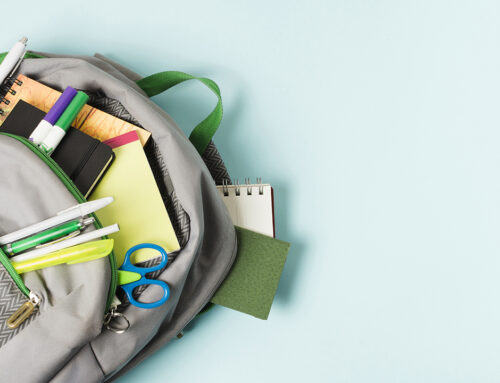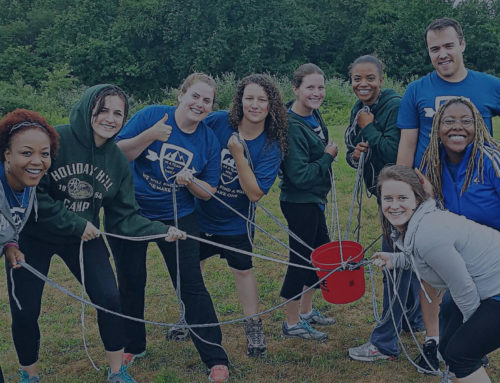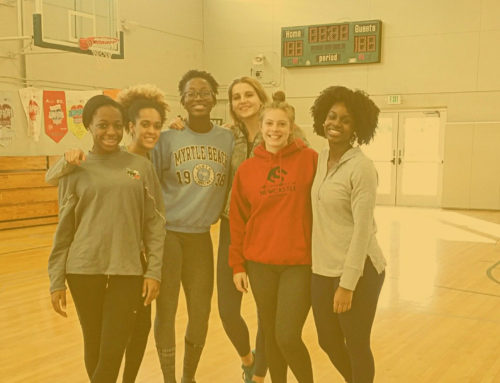A New Adventure – The 2020/2021 School Year
It seems like years ago when teachers, students, and their families transitioned from school in its traditional format (in-person) to distance learning. Back in March, many of us felt that the 2019/2020 school year would conclude in the “virtual format”, but held out hope that when the Fall came around, we would be back to business as usual.
Well, the 2020/2021 school year is upon us and we are definitely not back to business as usual! I have spoken to many teachers, school counselors, administrators, and superintendents over the past few weeks and those conversations have been quite different than past conversations with the same people – excitement to get the year started and to see students and fellow teachers has been replaced by uncertainty, doubt, anxiety, and fear. Some districts are going back to full in-person learning (with additional safety restrictions), some are implementing a “hybrid model”, and some are sticking to distance or virtual learning for the first half of the year.
We are in the midst of a completely new situation in which there are many more challenges and questions than there are answers. I like to consider this unique situation teachers, students, and their families find themselves in as an adventure. While many people think of physical activities when hearing the word “adventure,” such as white water rafting, hiking and backpacking, or zip lining and climbing, we take a bit of a different approach at Empower. Adventure is not about participating in an activity, it is about exploring the unknown! When we embark on an adventure, we explore unknown territory, we are not 100% certain of the outcome, and we make decisions to mitigate risk, all while progressing towards the “finish line”.
This new adventure requires us to take a step back to the basics! I do not have all of the answers or the “magic idea” that will lead to the perfect school year; however, I will offer some thoughts on what it will take to navigate your way through a class, day, week, or month of school!
Rediscover the “Why”:
- The most important part of being a teacher is the learning and development of the students. The initial reaction to this statement is most commonly, “yes, I need to help my students become better at _________(enter the subject matter)”.
- As you begin planning for your first lesson or unit of instruction, I encourage you to take a look at your district’s Mission, Vision, and Core Values. I will bet that you will not find a single word about student development in regards to a specific subject or course (e.g. chemistry, calculus, world history); instead, you will find phrases like “inspire students to realize their full potential”, “stimulating learning environment”, “commitment to others”, and other buzzwords, like respect, integrity, perseverance, problem solving, effective communication, etc.
- Think less about how you can help the students become exceptional in your specific subject matter, and think more about how you can leverage your content and the current environment as vehicles to help students realize their full potential and develop valuable life skills that will benefit them far beyond the classroom!
New Adventure, New Priorities
- Having students learn your subject matter and excel in your class is generally one of the main goals of a teacher; however, with this “new adventure” comes an opportunity to develop new priorities for you and your students.
- The physical, social, and emotional well-being of teachers and students should move directly to the top of the charts! Teachers have been asked to step out of their comfort zones – whether it be by delivering content in a new manner (virtually vs. in-person), adjusting to new regulations when it comes to safety, and facing anxiety or fear with regards to their physical health or that of their students and family members.
- Taking a few minutes at the start or end of a class to have an open dialogue with your students about their well-being will go a long way in creating a safe learning environment. Providing regular opportunities for students and teachers to discuss their personal challenges and fears will help create more meaningful connections between students and between students and teachers, which will, in turn, foster a safe environment that leads to more meaningful learning!
Well-Being Activities to Try
Monday Keep/Stop/Start Check-In
The group, students and teacher, will take 3 minutes to write down answers to the following prompts:
- What is something good or positive that happened to you, your class, or your family/friends that you want to KEEP happening this week?
- What is something bad or negative that happened to you, your class, or your family/friends that you want to STOP from happening this week?
- What can you/we START doing to KEEP the positives and STOP the negatives?
- Have everyone do a quick “share out” of their responses
Daily Check-In
Instead of a high-5, fist bump, or handshake when students walk into class, try something a bit different that doesn’t require physical contact.
Simple & Sweet Version:
- As students walk into class (or log in to Zoom), have them show a “thumb up” if they are feeling good, a “thumb sideways” if they are feeling ok, and a “thumb down” if they are having a tough day.
- Once everyone has gathered for class, ask each student to share why they gave themselves a thumb up/sideways/down.
A more Creative Version:
- Use a weather analogy: create a “weather forecast” poster/photo”, make sure each student has an index card with her/his name or initials written on it, and have each student place their card on the appropriate weather forecast:
- Hot and Humid with Chance of Thunderstorms = Very Frustrated or Angry
- Sunny with a Cool Breeze = In a Great Mood
- Cold, Gloomy, and Rainy = In a Down Mood
- Have each student explain why they placed their index card where they did and ask them to describe some “weather precautions” they took to help make it through weather conditions for that day:
- If a student chooses “Hot and Humid”, they could talk about how they are going to seek shelter to stay away from the chaotic and turbulent elements
- If a student chooses “Sunny with a Cool Breeze”, they could talk about enjoying the moment while trying to bring some perfect weather to someone else’s day
- If a student chooses “Cold, Gloomy, and Rainy”, they could talk about some of the things they do to uplift themselves during those types of days.
By consistently fostering an environment in which students and teachers are comfortable with sharing how they feel and why they feel that way, you are creating the safe and supportive classroom dynamic that will help children thrive and achieve despite the many questions and concerns around school during this unprecedented time!


















